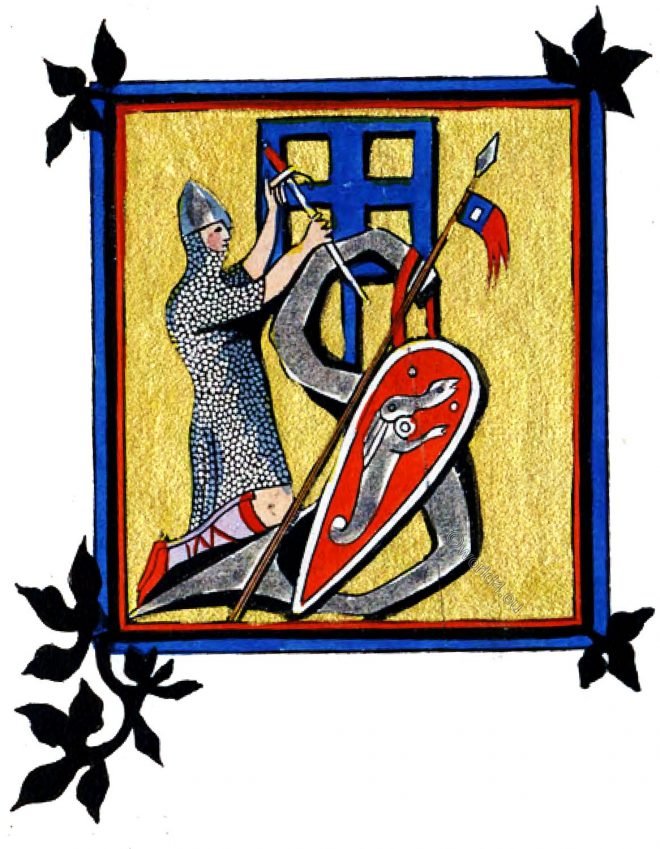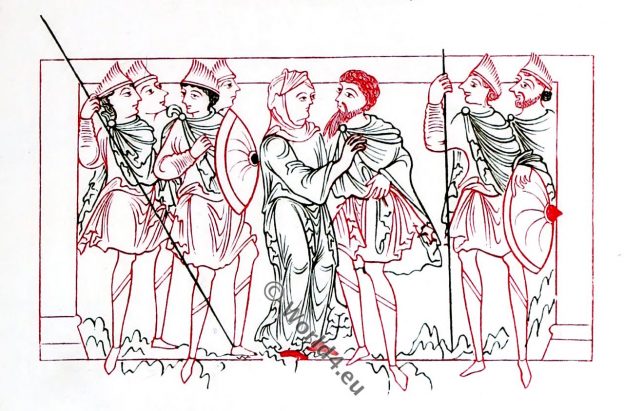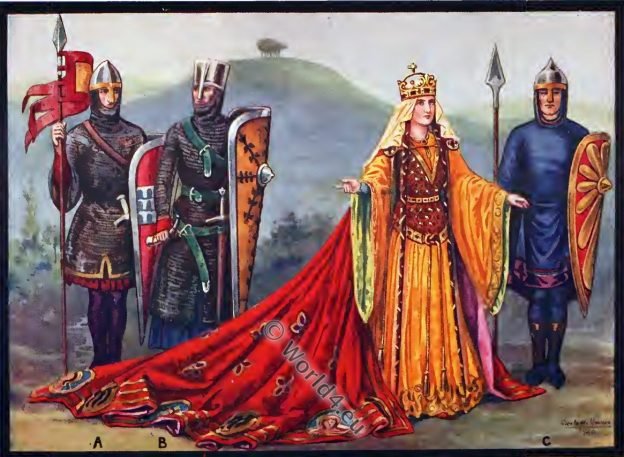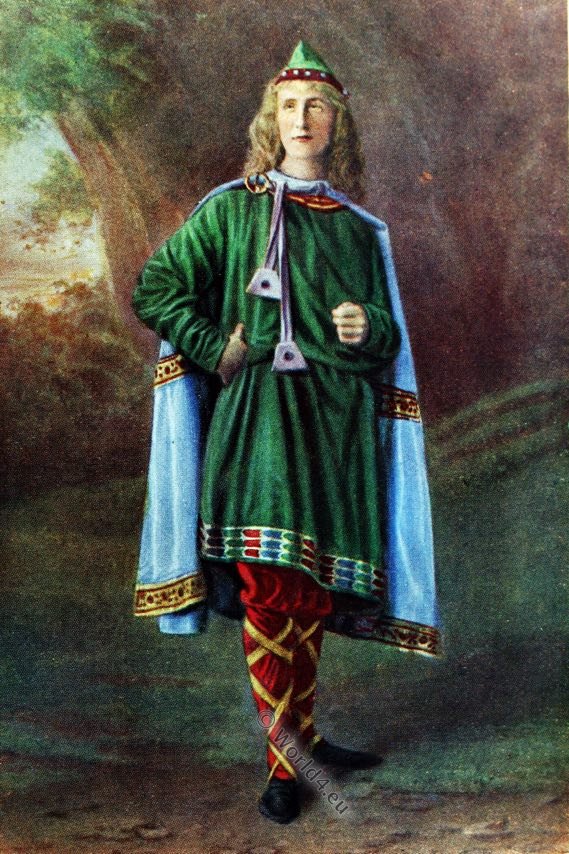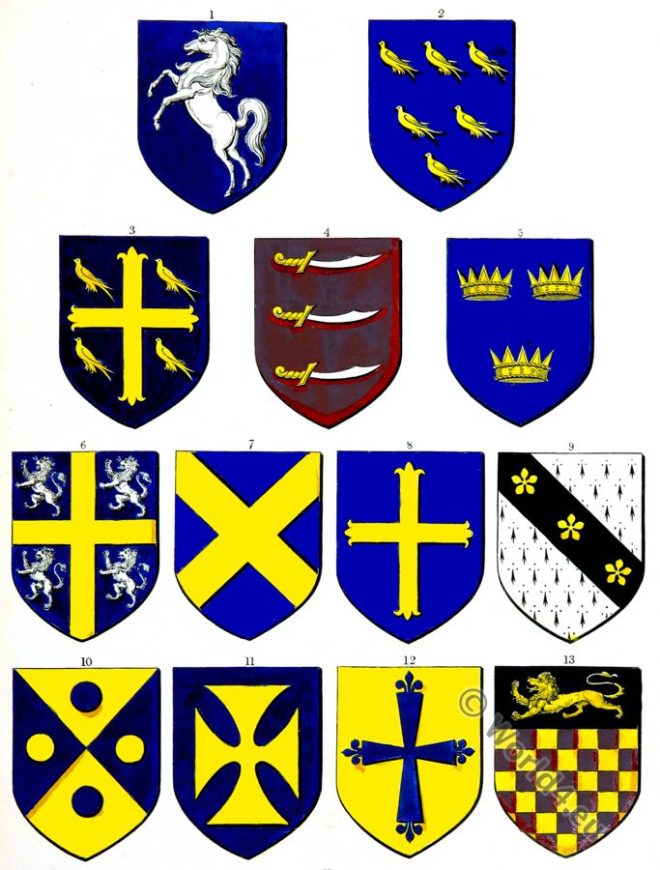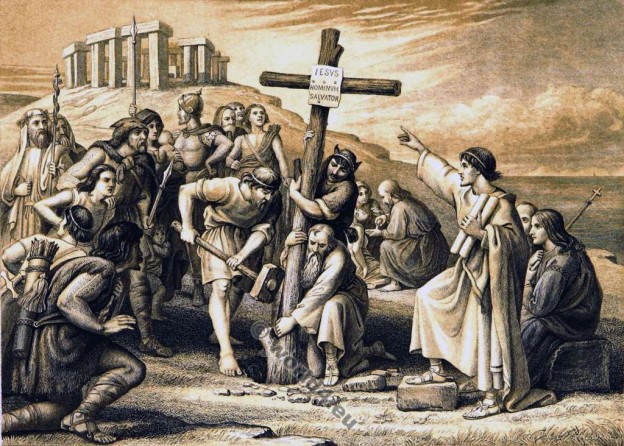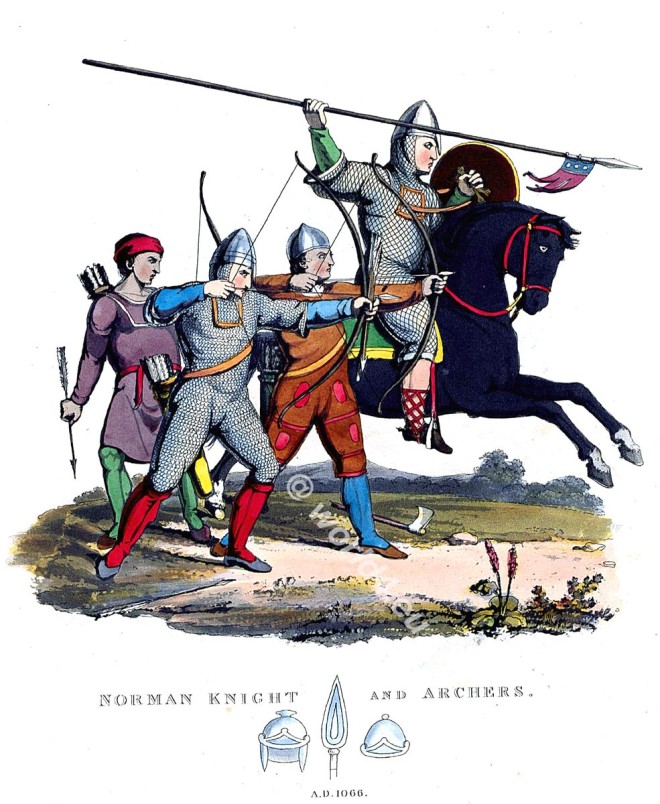The Norman conquest. William the Conqueror. 1066. The state of Armour in Britain when William led his army of Normans.
Category: Anglo-Saxon
King Alfred’s Jewel, and the Ring of King Athelwulf.
The most ancient specimen of what to all appearance is a true enamelled work is the ring of Athelwulf, the father of Alfred, preserved in the British Museum, and engraved on the accompanying plate.
Ladies fashion of the 12th century. Virgin Mary. Anglo-Norman servants.
These figures present interesting examples of the female costume among our ancestors in the first half of the twelfth century. Illuminations of the Cottonian Manuscript Nero C. IV.
Spanish warriors, jongleurs, minstrels in the 11th century.
The figures which form our plate represent Spanish warriors of the latter part of the eleventh century, and are interesting on account of their remarkable resemblance to the Anglo-Norman soldiers on the celebrated Bayeaux Tapestry.
Illustrations of Prudentius. Anglo-Saxon civil and military costume.
Prudentius is the most important Christian poet of late antiquity. Prudentius was very popular in the Middle Ages. There are more than 300 manuscripts, the oldest one from the 6th century.
Norman and Anglo-saxon costume period. Medieval England 1066-1154.
The Norman Period. Medieval fashion and costume history of England 1066-1154. William the Conqueror, William II., Henry I., Stephen.
The Anglo-Saxon fashion and costume history. England c. 460 to 1066.
The Saxons commenced their conquests during the fifth century, but it was not until the year 720 that the earliest MS. preserved to us saw the light.
Britannia Saxonica. Chronology of the Anglo-Saxons.
The Saxon Heptarchy in England. A map of Britain during the Saxon octarchy. ARMS OF THE ANGLO-SAXON KINGS.
The dawn of christianity in Britain.
THE DAWN OF CHRISTIANITY IN BRITAIN. The first preaching of christianity in Britain. A new power had already been in operation before the coming of the Saxons,—that power before which… Read More
The Battle of Hastings. The Norman Conquest, 11th c.
This important battle was fought about nine miles from Hastings, in Sussex, upon the 14th day of October, being Saturday, the year of our Lord 1066.

